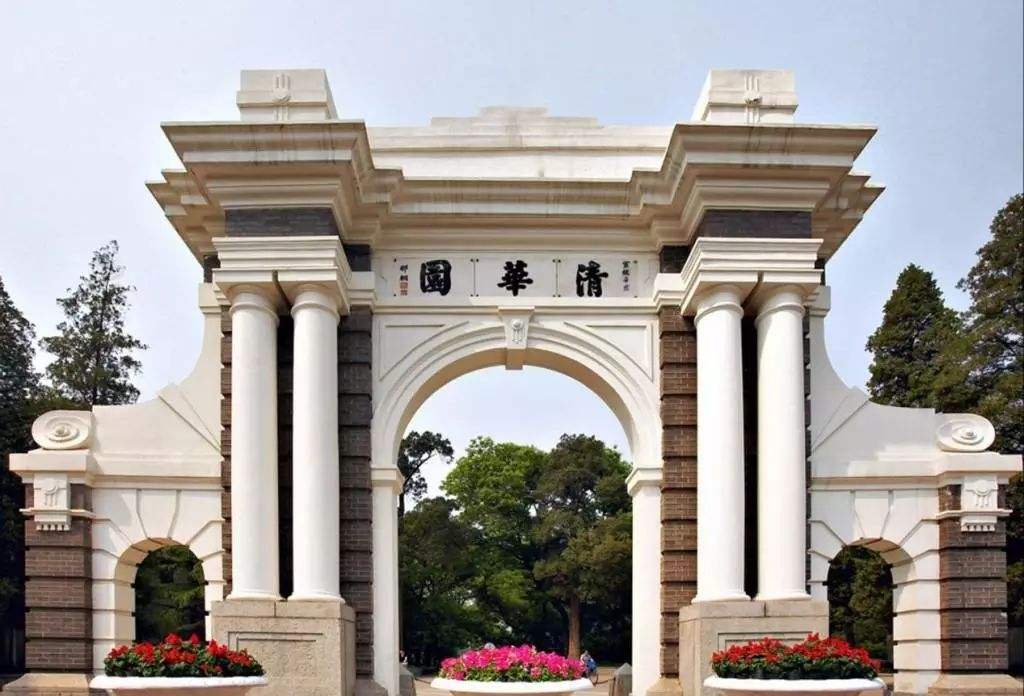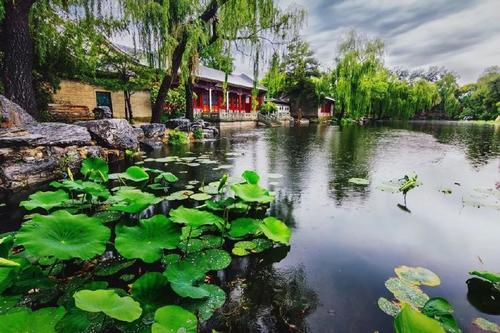Chinese Name: 清华大学 Pronunciation: Qīnghuá Dàxué
Building Time: 1911
Recommended Time for Visit: 1-2 Hours
Campus Area: About 4,421,200 square meters
Building Area: About 2,817,000 square meters
Address: No.30, Shuangqing Road, Haidian District, Beijing, China
Admission Ticket Fare: Free (Note: Online reservation is required for campus visits.)
Building Function: An important base for the training of high-level talents and scientific and technological research in China.
| Campus Gate | Time for Entering the Campus |
| West Gate (Enter and Exit) | 9:00-10:00 |
| 10:00-11:00 | |
| 14:00-15:00 | |
| 15:00-16:00 |
1. The campus is open for visitors on summer and winter vacations, legal holidays, and weekends;
2. During summer and winter vacations, the campus is closed on Mondays every week. Campus visits will be suspended for important events on campus or extreme weather and other circumstances.

Tsinghua University (THU), situated in the Tsinghua Garden, was once an imperial garden of the Qing Dynasty (1636-1912). Surrounded by historical sites, the university is an important base for training high-level talents and conducting scientific and technological research in China.
Since the establishment in 1911, it is committed to academic excellence, the prosperity of Chinese society, and global development. Today, most national and international rankings place THU as one of the world-class universities in China.
In THU, visitors can see the ancient buildings of different architectural styles. The ancient buildings are mainly located in the west of Xuetang Road. In the east of the road, there are buildings built after the foundation of the People’s Republic of China in 1949.
In 1911, Tsinghua University was established on the site of Tsinghua Garden, a former royal garden of the Qing Dynasty, and Tsinghua Xuetang (Tsinghua Imperial College) was founded.

In 1912, Tsinghua Xuetang was renamed “Tsinghua Xuexiao” (Tsinghua College).
In 1928, Tsinghua Xuexiao was renamed “National Tsinghua University”.
In 1952, Tsinghua University became a polytechnic institute specializing in engineering and natural sciences.
Since China’s reform and opening up in 1978, Tsinghua University has strengthened its teaching in science, economics and management, humanities, and law.
In 2017, Tsinghua officially released the “Double First-Class Universities & First-Class Disciplines” development plan. Currently, Tsinghua has become a world-class comprehensive university offering such courses as engineering, science, economics, management, arts, medicine, philosophy, law, literature, history, and education.

Designed by the American architect Henry K. Murphy, the auditorium was built between 1913 and 1917. It was one of the four major building projects (the other three are the Science Building, the Old Library, and the Gymnasium). The design of the auditorium is based on the drawings of the University of Pennsylvania’s auditorium, which has the characteristics of Greek and Roman architecture and looks very elegant.

The name Shuimu Tsinghua means “clear water and trees surrounding Tsinghua”, which is one of the most captivating spots in Tsinghua University. It was founded in the 18th century and used to be a part of the imperial garden, so it is also called “a garden within a garden”. The four Chinese characters, “Shui Mu Qing Hua”, were copied from an inscription by Emperor Kangxi in the Qing Dynasty.
Jinchun Garden, located on the west side of the university, was the former residence of Emperor Xianfeng of the Qing Dynasty before he ascended to the throne. It was originally the main part of Emperor Kangxi’s Xichun Garden. Now the garden is part of the Tsinghua Garden.
Tsinghua alumni are spreading all over the world and making great contributions to the world’s social and economic development with their wisdom and power in various industries.
In China, famous Tsinghua alumni include Xi Jinping, President of China, Hu Jintao, former President of China, Zhu Rongji, former Premier of the State Council of China, and Yang Zhenning and Deng Jiaxian, academicians of the Chinese Academy of Sciences.
To ensure normal teaching and research activities, the campus is divided into open areas and non-open areas. Visitors should follow the designated visiting routes in the open areas.
Visitors should take care of the campus environment, observe social morality and do not damage public property and landscape, besides, do not make loud noises or throw cigarette butts. Visitors should also abide by campus safety management regulations and do not interfere with the normal teaching, research, and living order of the university.
Southeast Gate: Take bus 355, 392, 438, 450, 466 and get off at Qing Hua Dong Lu Xi Kou Station.
West Gate: Take bus 331, 305, 320, 365, 375, 438, 508, 579, 601, 614, 681, 982, get off at Qing Hua Da Xue Xi Men Station.
Take Metro Line 4 and get off at Yuan Ming Yuan Station (Exit C) and then walk eastward for about 440 meters along the Western Tsinghua Road.
Chinese: 请带我去清华大学。English: Please take me to Tsinghua University.
Chinese: 请带我去清华大学的东南门。 English: Please take me to the Southeast Gate of Tsinghua University.
Chinese: 请带我去清华大学的西门/西北门。English: Please take me to the West Gate or the Northwest Gate of Tsinghua University.
If you go to the Main Gate (the Southeast Gate) of Tsinghua University from the center of Beijing (Grand Hyatt Beijing), it takes about 45 minutes (about 50 yuan).
If you go to the Main Gate of Tsinghua University from Beijing Capital International Airport, it takes about 40 minutes (about 100 yuan).
If you go to the Main Gate of Tsinghua University from Beijing Daxing International airport, it takes about an hour and 20 minutes (about 210 yuan).
If you go to the Main Gate of Tsinghua University from Beijing West Train Station, it takes about 35 minutes (about 45 yuan).
